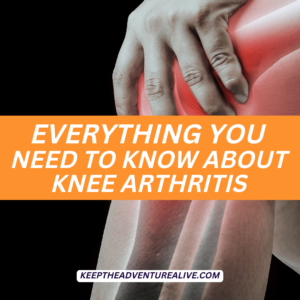Knee pain on stairs is not something you are doomed with when it comes to osteoarthritis. It is possible to regain strength, confidence and balance to help support your knees and to take the pressure off.
If you have knee osteoarthritis, it may seem impossible to climb up or down stairs like you used to. In this article, you’ll find out it is actually possible to go down the stairs with ease again!
Take a look at what is possible:



Why is going down the stairs difficult?
Have you noticed that going up the stairs is easier but going down the stairs is difficult? This can happen because going up and down the stairs require different variations of muscle strength.
Going down the stairs requires controlling the entire body weight with one leg, demanding a considerable amount of stability and control for that one leg. This heightened demand on the knee joint can results in pain, muscle tightness, and lack of confidence in the supporting leg.
When going up the stairs, you need muscle power from each leg which means generating strength quickly. You have to be able to lift your bodyweight up with each leg, rather quickly.
When you are walking up the stairs, there is less focus on the single leg stability because you are in an ascending motion instead of descending.
Control can require more effort than power. That is why you may notice more knee pain on the stairs when going down instead of up.
Exercises to reduce knee pain on the stairs when going down
When looking to build strength while also dealing with knee arthritis, it is important to make sure you aren’t experiencing significant pain.
Starting with the basics can help you to avoid overdoing it and paying for it later in pain.
If these exercises below do not feel good, there are other options to modify!
Exercise #1: Slow Chair Squat
To tackle the challenge of descending stairs, there are not just one but two movements that can make a substantial difference in building the necessary strength and control.
The first movement involves mastering the art of sitting down slowly, without plopping down.
Think about it, if you sit down on a lower surface, do you find yourself plopping down or sitting down rather quickly and uncontrolled?
This could be one of the main reasons why going down the stairs is difficult. Lacking muscle control puts more stress and can elicit knee pain going down the stairs.
This strategic practice is designed to instill the muscle control required for a smoother descent.
Starting on a higher surface and gradually progressing to lower ones, the process involves standing as if preparing to sit down, reaching the hips back, and slowly descending on a count of three. This will start to increase your muscle control and thus make going down stairs easier and less painful.
It’s best to only start with a few repetitions at first to see how your body responds. Aiming for 5-10 repetitions may be a good place to start.
You can see an example of the movement in this short video below:
If you are having difficulty with a chair squat, some modifications include:
- using a higher surface like a bed or adding a cushion to a chair
- using a chair with arms to use upper body support to stand up
- check out this video for other ideas on how to modify chair squats
Exercise #2: Single Leg Modified Squat
Once you are able to master sitting down slowly with both legs, the next recommended movement involves addressing single leg strength and control.
You’ll start in a seated position, staggering your stance, with one foot strategically placed in front of the other. The closer your feet are to each other, the easier it will be. The further out your front foot is away from your body, the harder it will be.
You’ll stand up, keeping your feet in the staggered position. This will allow for more weight to shift to the back leg, focusing on modified single leg strength.
The gradual progression from a basic staggered stance to a more challenging one (where your legs are further split out) allows you to build single leg strength and control over time.
Single leg control is arguably one of the most important components of reducing knee pain going down stairs.
Moving Beyond the Basics
While these two foundational movements serve as an excellent starting point, there are many other movements that can take your strength to the next level. It is important to make sure your body is well-balanced and your joints are supported to ensure stair climbing with ease.
These higher difficulty movements not only aid in conquering stairs but also assist in walking on inclines and engaging in various activities with newfound confidence. The key is to develop strength, balance, stamina, and confidence through a diverse set of exercises.
If you’re dedicated to overcoming knee pain, tackling stairs with ease, walking longer distances and more- there is an opportunity to dive even deeper.
Adventurers for Life, my signature membership, could be your next best friend in your arthritis journey. It includes:
- Intake quiz to make sure you are starting in the best place that matches your current level of function and pain levels
- Step-by-step follow-along workouts meticulously designed to guide you through building the strength, balance, stamina, and confidence without flaring up joint pain
- Support groups, live workouts and virtual events that allow you to meet other members who understand what you’re going through
- Tests to pass along the way to make sure you aren’t progressing too quickly. These tests help with reducing flare ups, measuring progress and increasing confidence
Those intrigued by this comprehensive approach can find more information and take the first step by learning more by clicking the button below:
Hear from current members and
their wins on the stairs 🎉
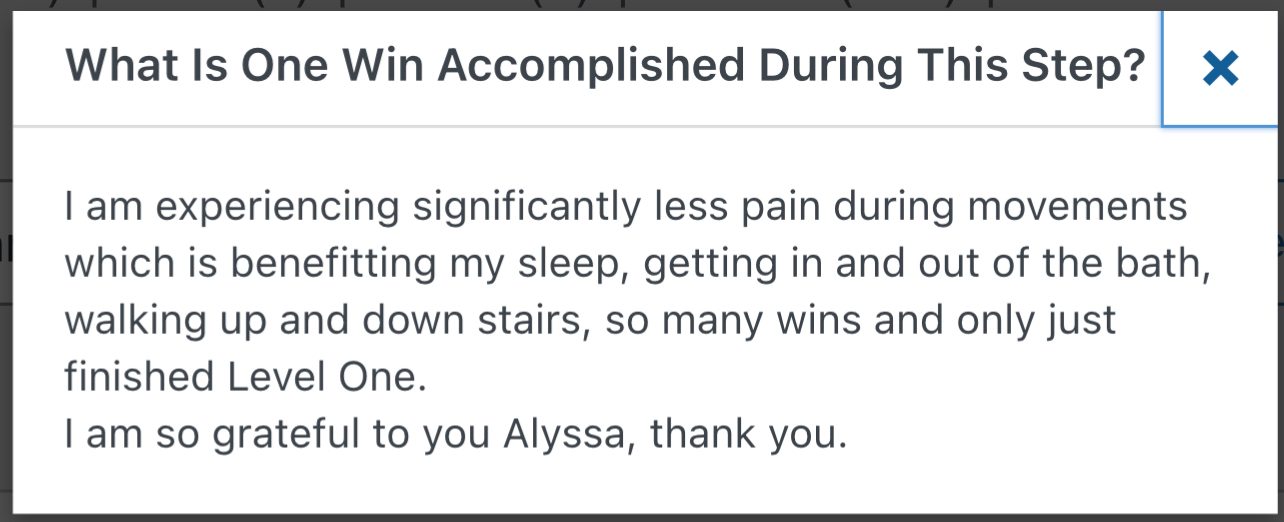
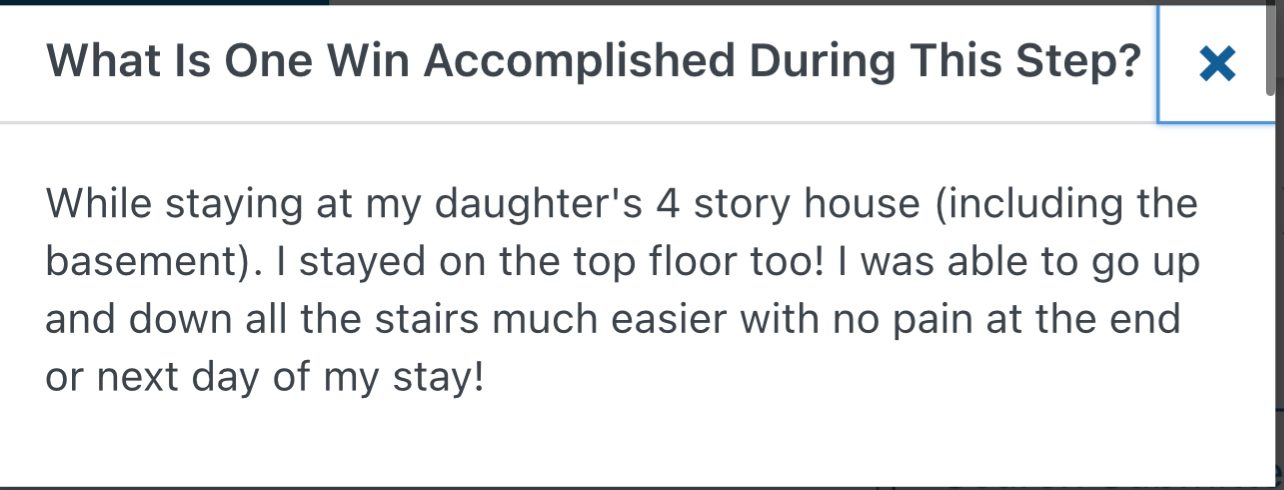
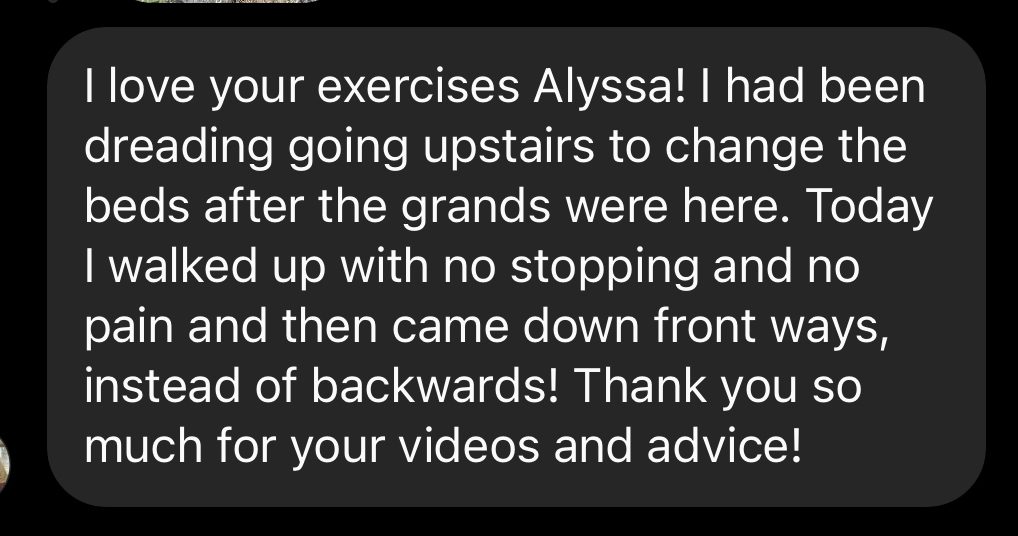
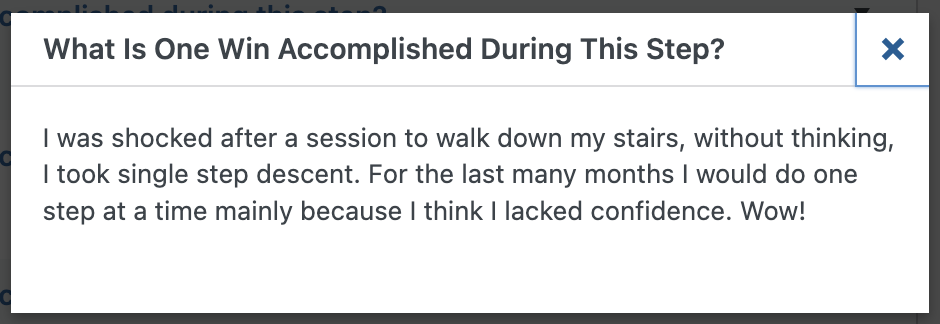
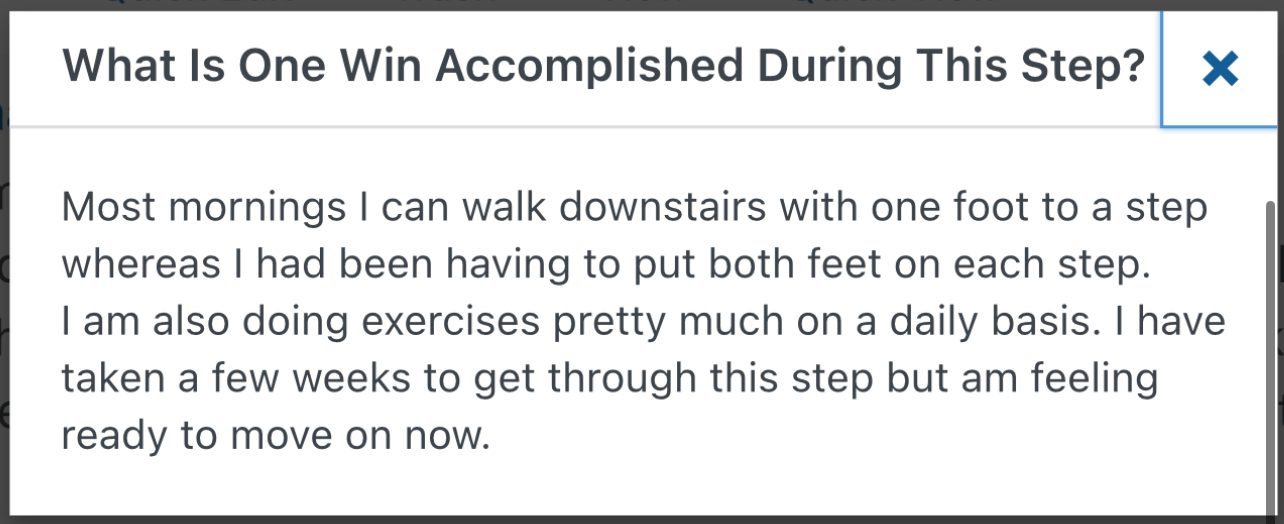
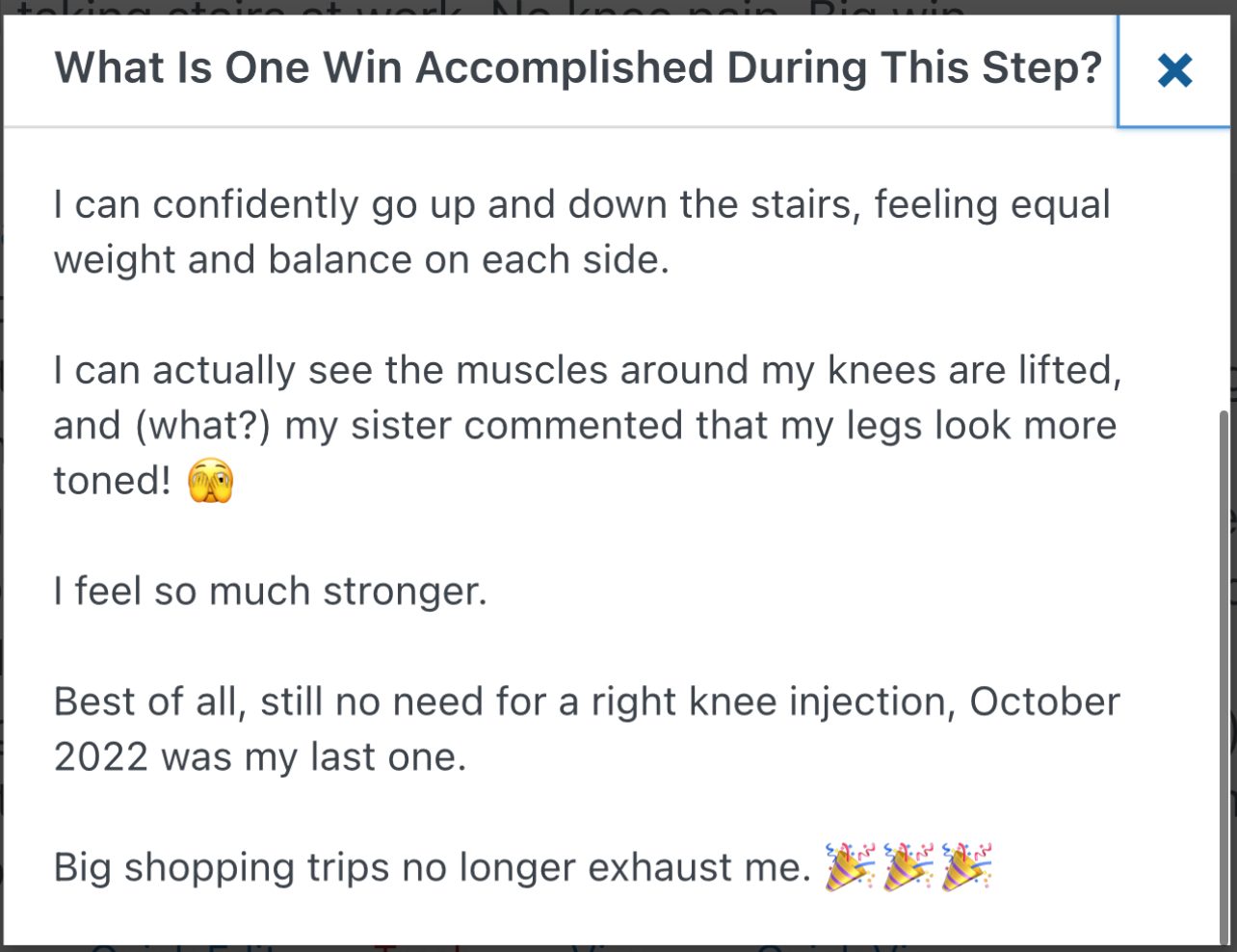
Conclusion
The journey to navigating stairs with ease is not just a possibility; it’s an achievable reality.
By understanding the intricacies of going down stairs, incorporating the recommended movements into your routine, and potentially exploring further through the Adventures for Life membership, you can reclaim your ability to move confidently and pain-free.
This article emphasizes the commitment to building control, strength, and balance—one step at a time. Cheers to working towards reducing knee pain on stairs, especially when going down.
Alyssa Kuhn
Disclaimer: This post is for general informational purposes only. It should not be used to self-diagnose and it is not a substitute for a medical exam, cure, treatment, diagnosis, and prescription or recommendation. It does not create a doctor-patient relationship between Dr. Kuhn and you. You should not make any change in your health regimen or diet before first consulting a physician and obtaining a medical exam, diagnosis, and recommendation. Move Well Age Well, LLC and Dr. Alyssa Kuhn, PT, DPT are not liable or responsible for any advice, course of treatment, diagnosis or any conclusions drawn, services or product you obtain through this post, video or site. Complete all exercises at your own risk.

